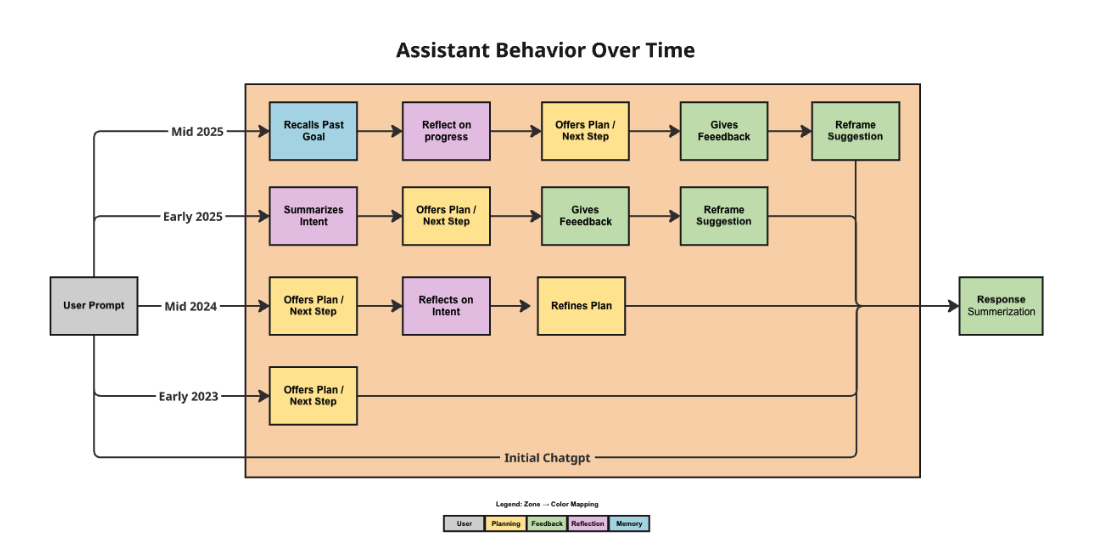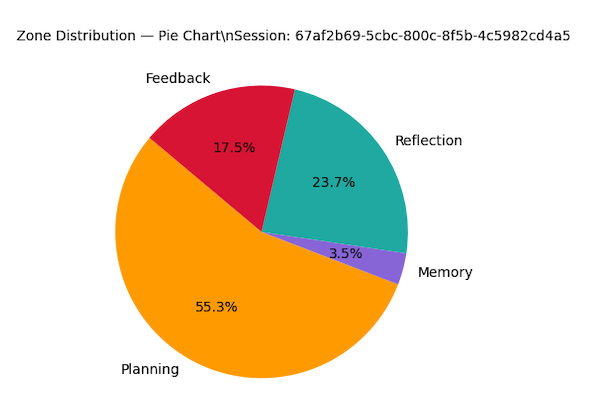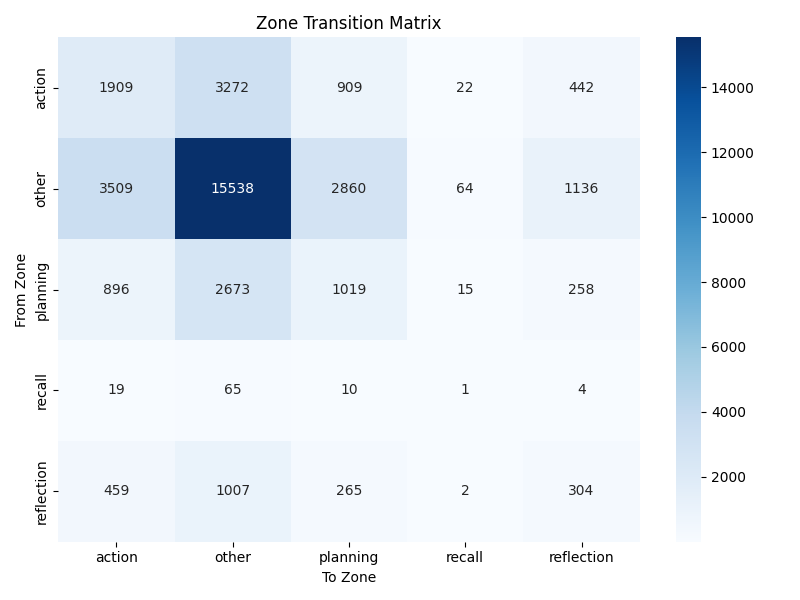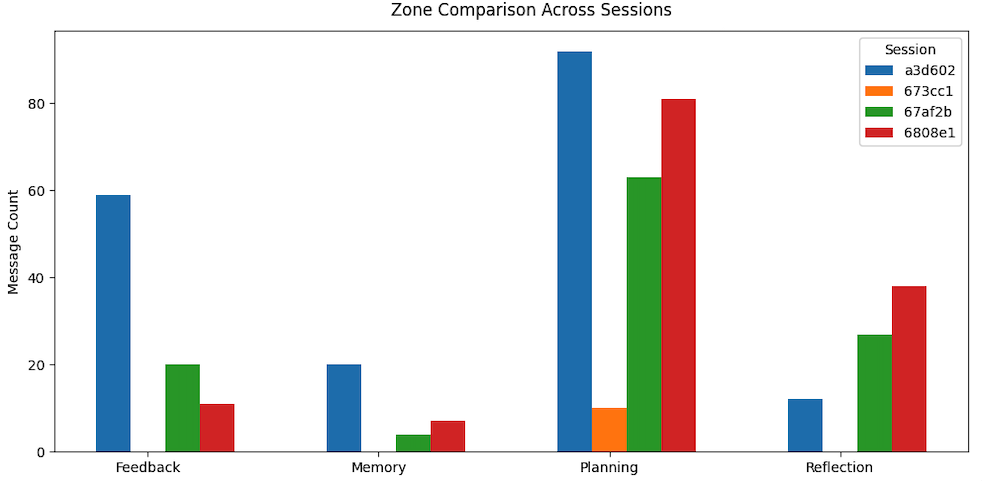NeuroTrace
A Reproducible Analytics Framework for Cognitive AI
NeuroTrace is a deterministic, file-first analytics framework I built to investigate how personalization emerges in memory-enabled AI systems. It transforms raw conversational logs into structured, analyzable data, allowing for a graph-based exploration of an AI’s cognitive growth and behavioral patterns over time. The entire framework was designed to serve as the technical engine for my research on AI personalization.


The Problem: Understanding AI’s Cognitive Growth
While memory-enabled AI systems can adapt to users, there is limited understanding of how this personalization actually unfolds over time. Most AI evaluations focus on performance benchmarks at discrete points but do not examine the system’s cognitive growth trajectory. I built NeuroTrace to address that gap by providing a tool to model and measure this evolution structurally.
How It Works: A Deterministic Analytics Pipeline
NeuroTrace is a CLI tool that runs a complete, one-shot pipeline: it ingests raw JSON conversation logs, computes stable derived artifacts, and generates visualizations and reports. The framework is built on two core principles:
Modular Analytics
A suite of computational modules processes the ingested data to analyze distinct cognitive dimensions. The key modules include:
- Tagging: Assigns cognitive zones (e.g., Planning, Reflection, Feedback, Memory) to assistant messages.
- Zone Transitions: Builds transition matrices to model how behaviors shift across conversations.
- Response Depth: Measures the structural complexity of assistant outputs over time.
- Semantic Memory: Identifies memory-like events and reactivation of past behaviors across sessions.
Guaranteed Reproducibility
For research to be credible, its methods must be reproducible. NeuroTrace is designed to be fully deterministic:
- File-First: The pipeline ingests raw data and writes a series of stable JSON artifacts to disk. The API is strictly read-only and serves precomputed data.
- Deterministic by Design: The framework guarantees that the same input will always produce the exact same output. It uses SHA-256 content hashing, sorted keys in JSON, and a frozen configuration with no environment variables.



Key Findings & Impact
The application of NeuroTrace resulted in the formal research paper, “Personalization in Memory-Enabled AI Systems.” The analysis of 835 conversations (~37,000 messages) provided measurable, data-driven insights into AI personalization:
- Emergence of Functions: The framework successfully tracked how the assistant’s behavior evolved from simple, linear responses to a stable set of functions. Planning (≈4,200 instances) and Response (≈4,000 instances) were the most frequent zones.
- Behavioral Reinforcement: The analysis revealed habitual patterns. The most prominent cross-zone pattern was a
Feedback -> Planningtransition, which occurred in ~26% of feedback events, indicating a strong corrective loop.
This project serves as a complete loop from theory to tool to insight. It provided the technical means to conduct novel research and produced a reusable framework for future studies in human-AI interaction.